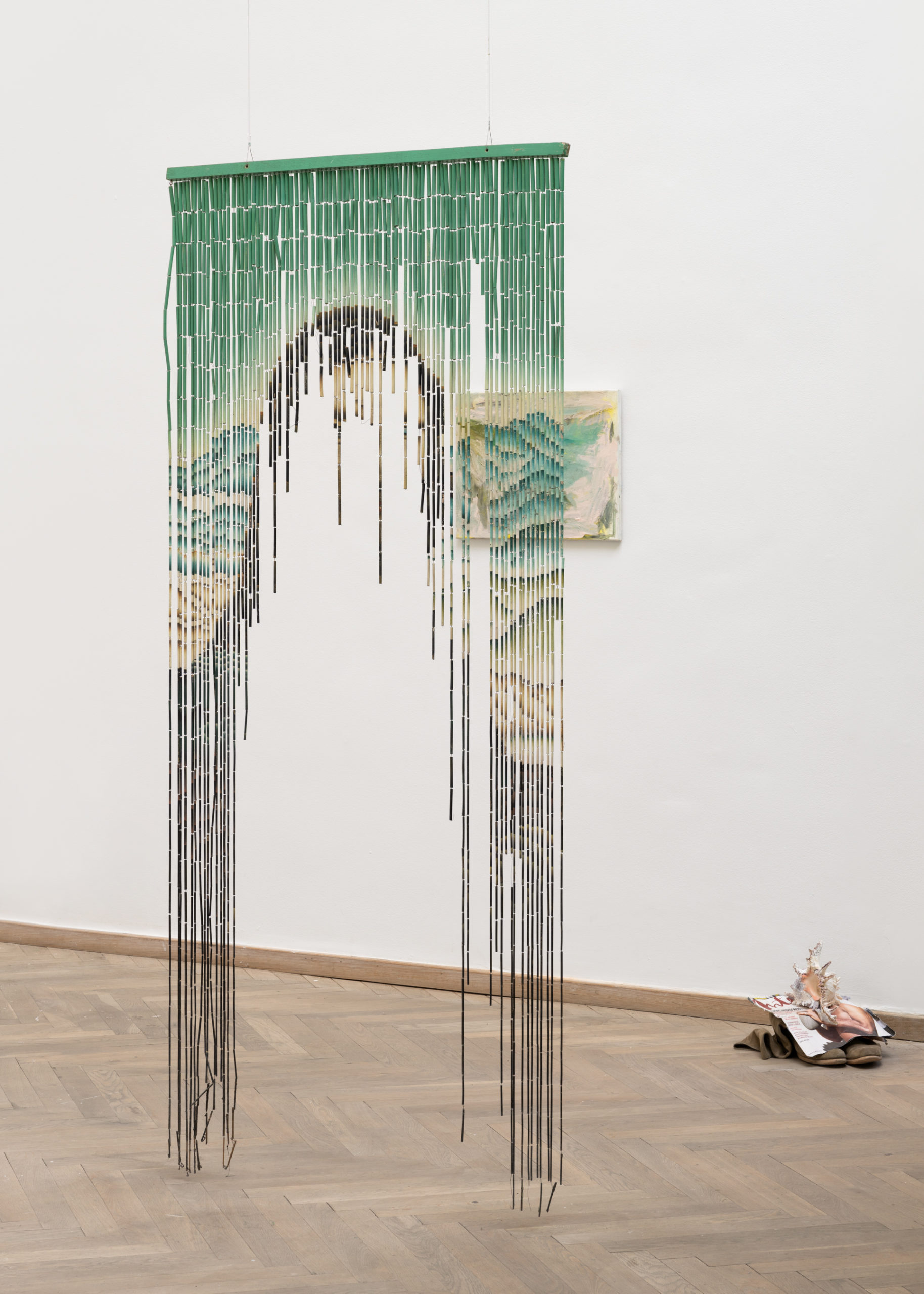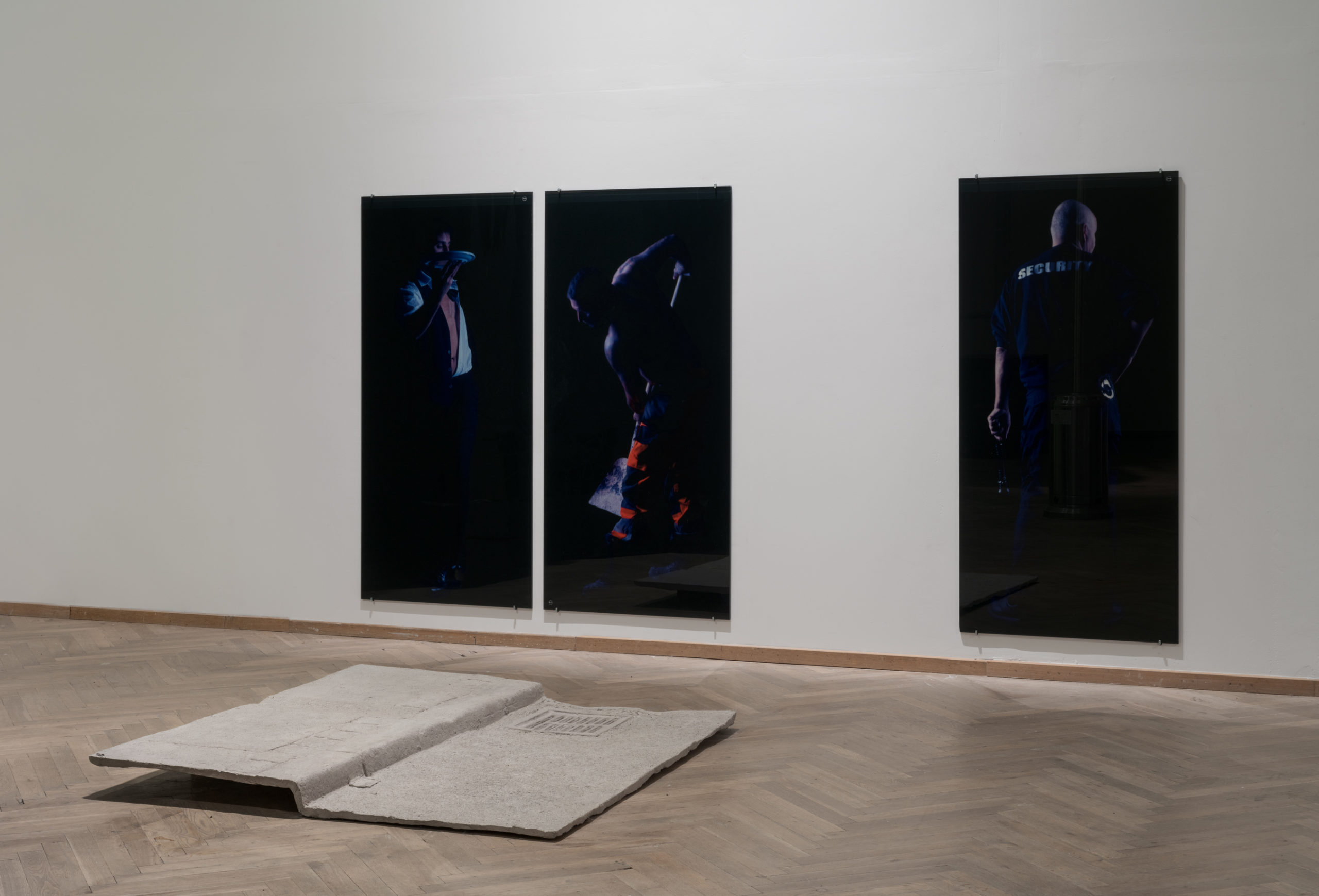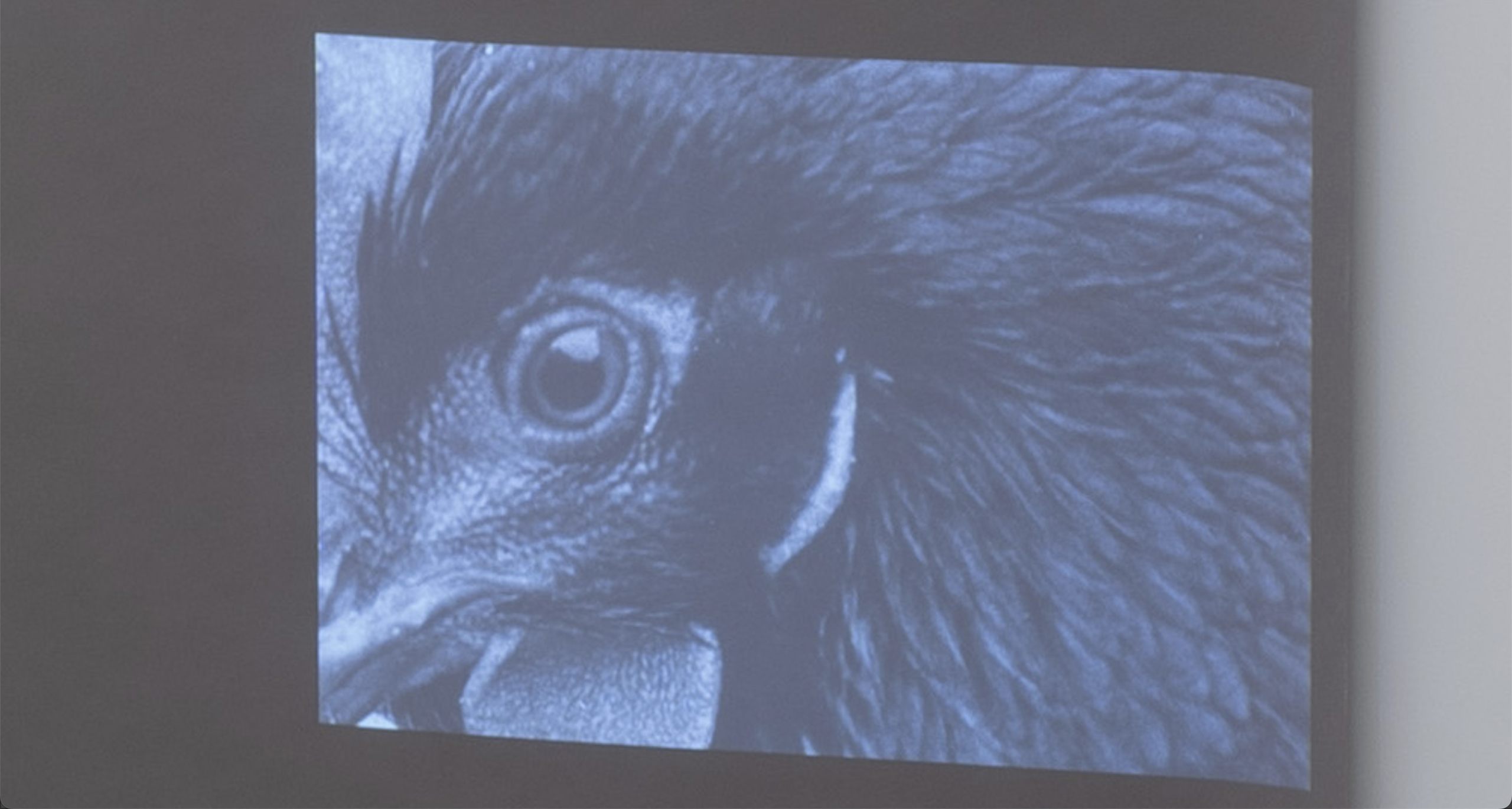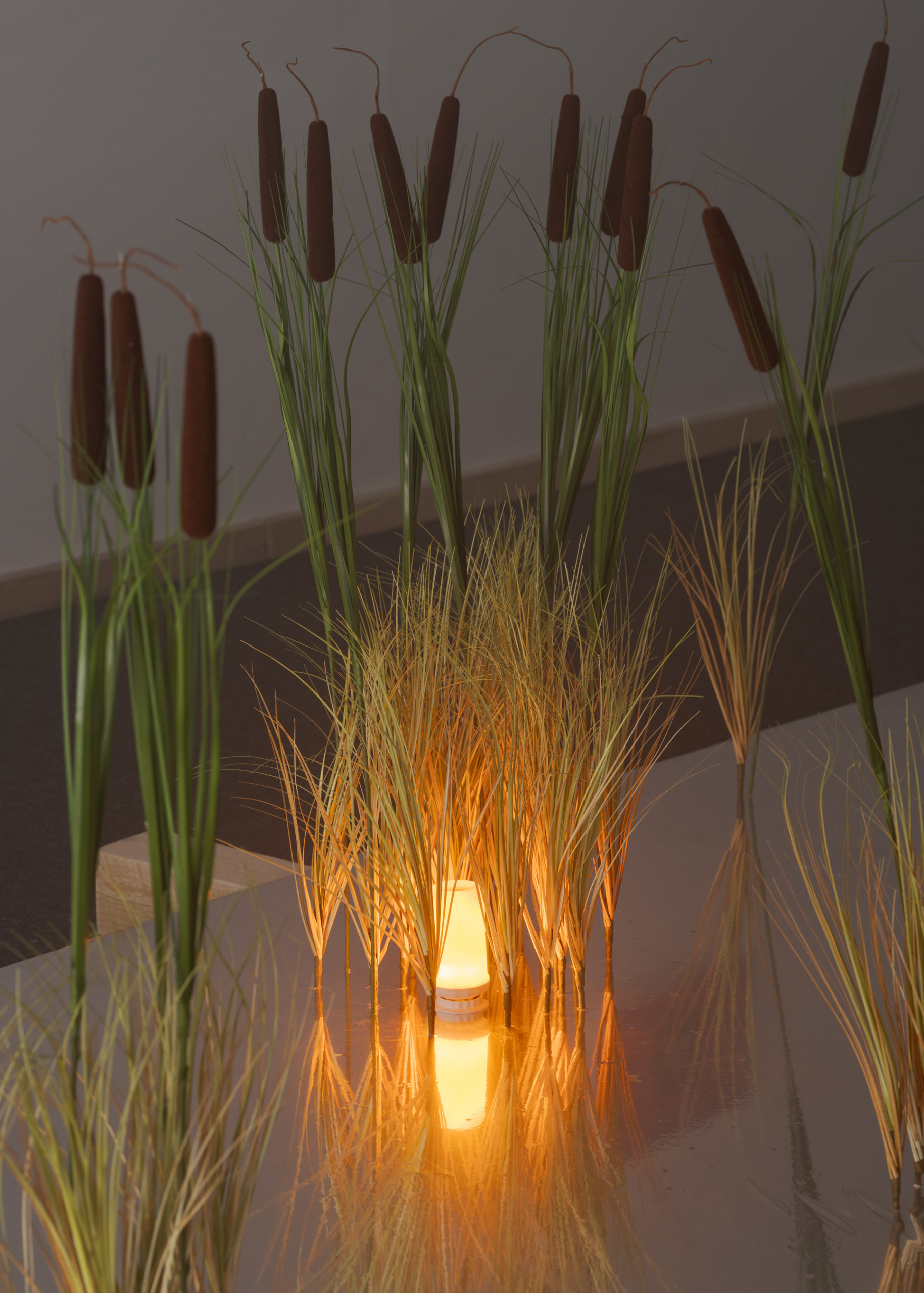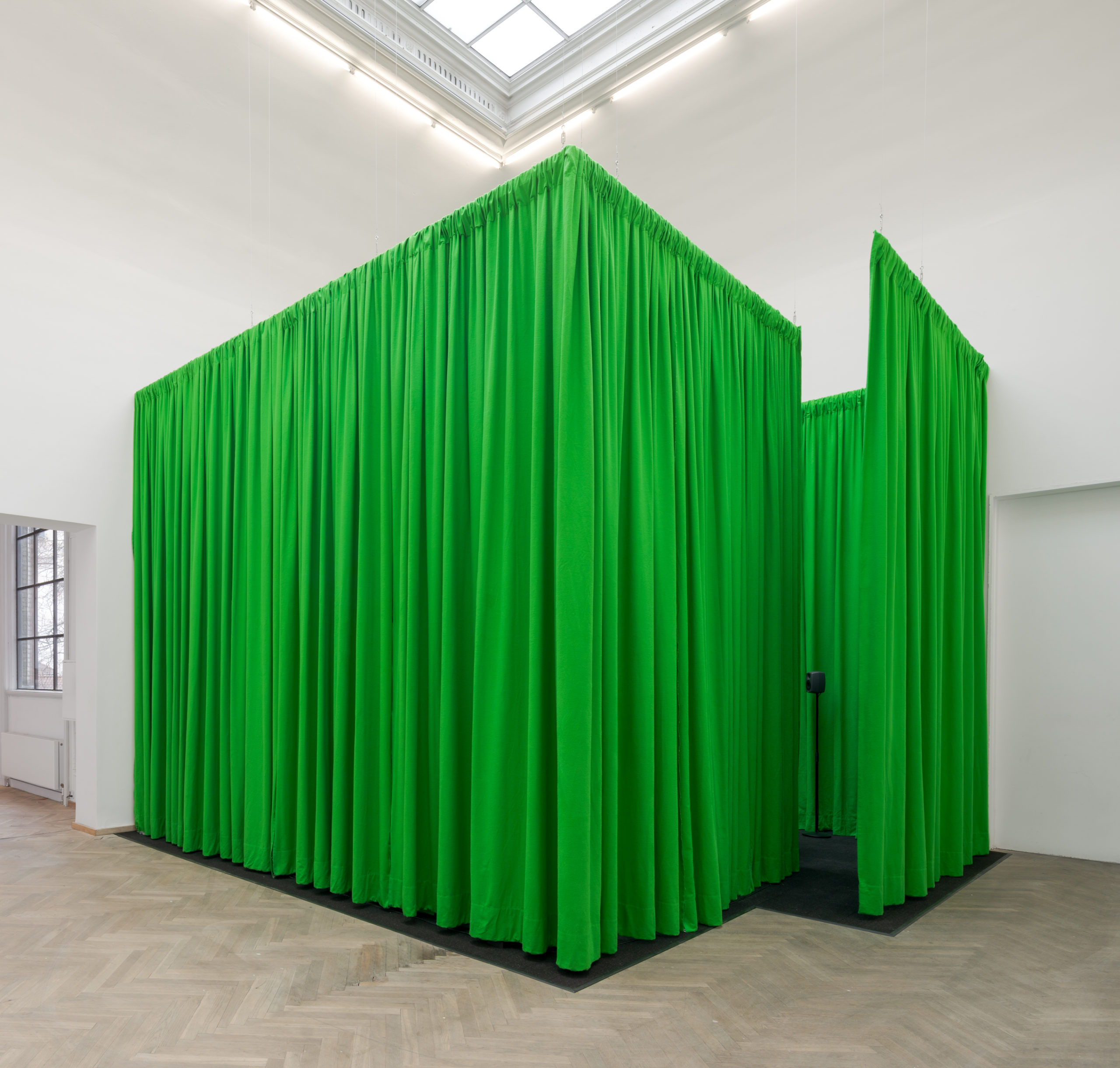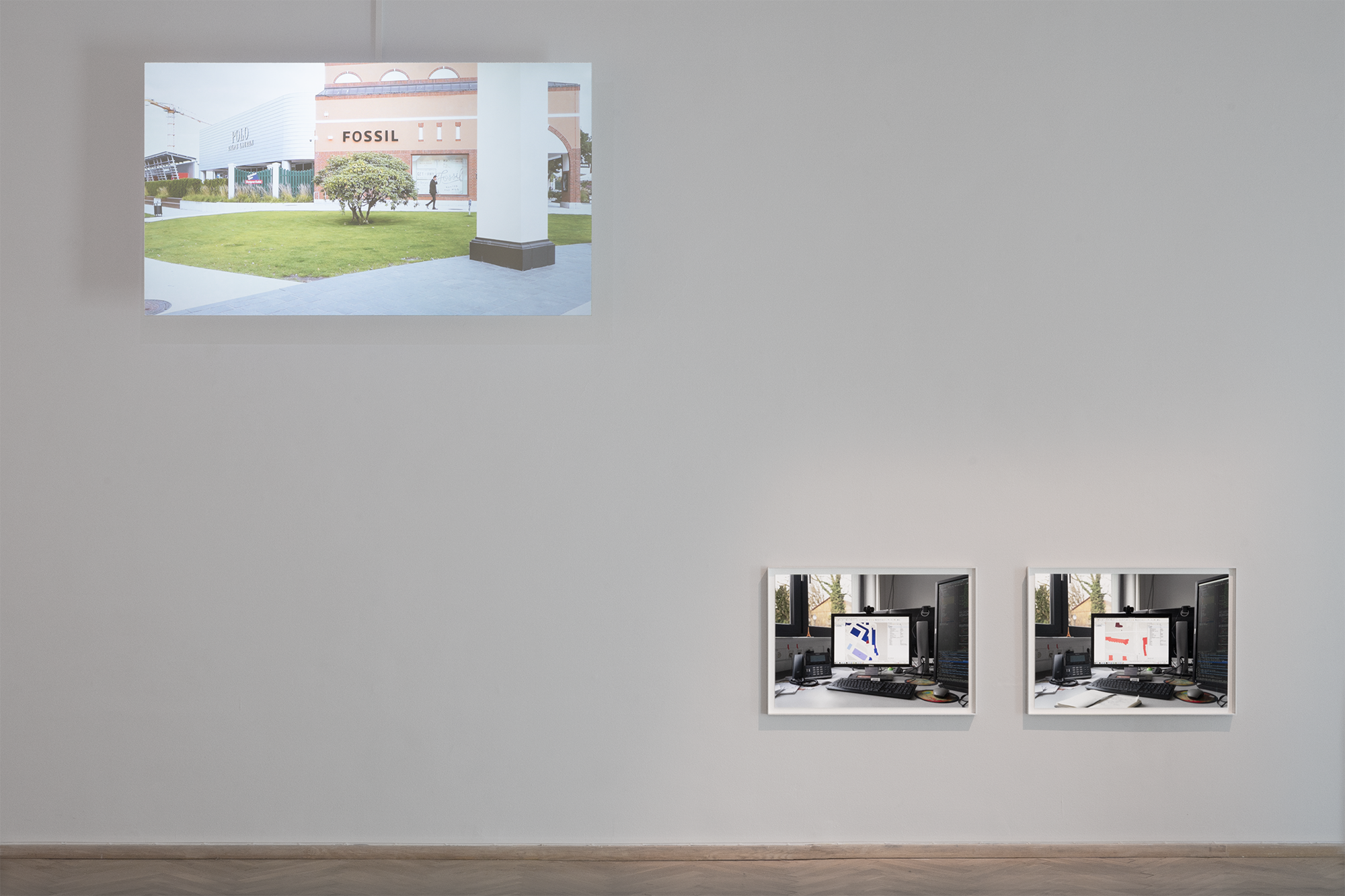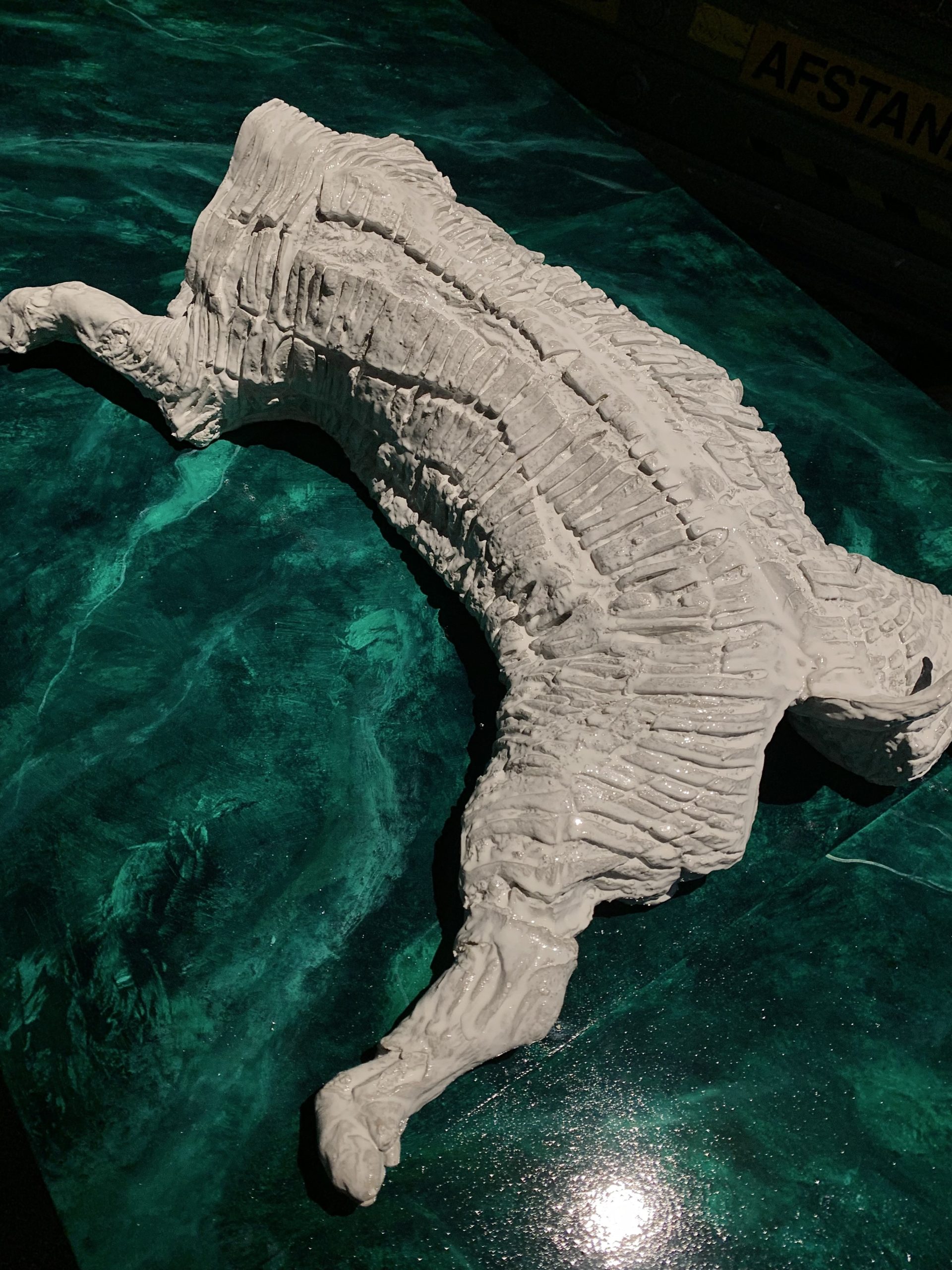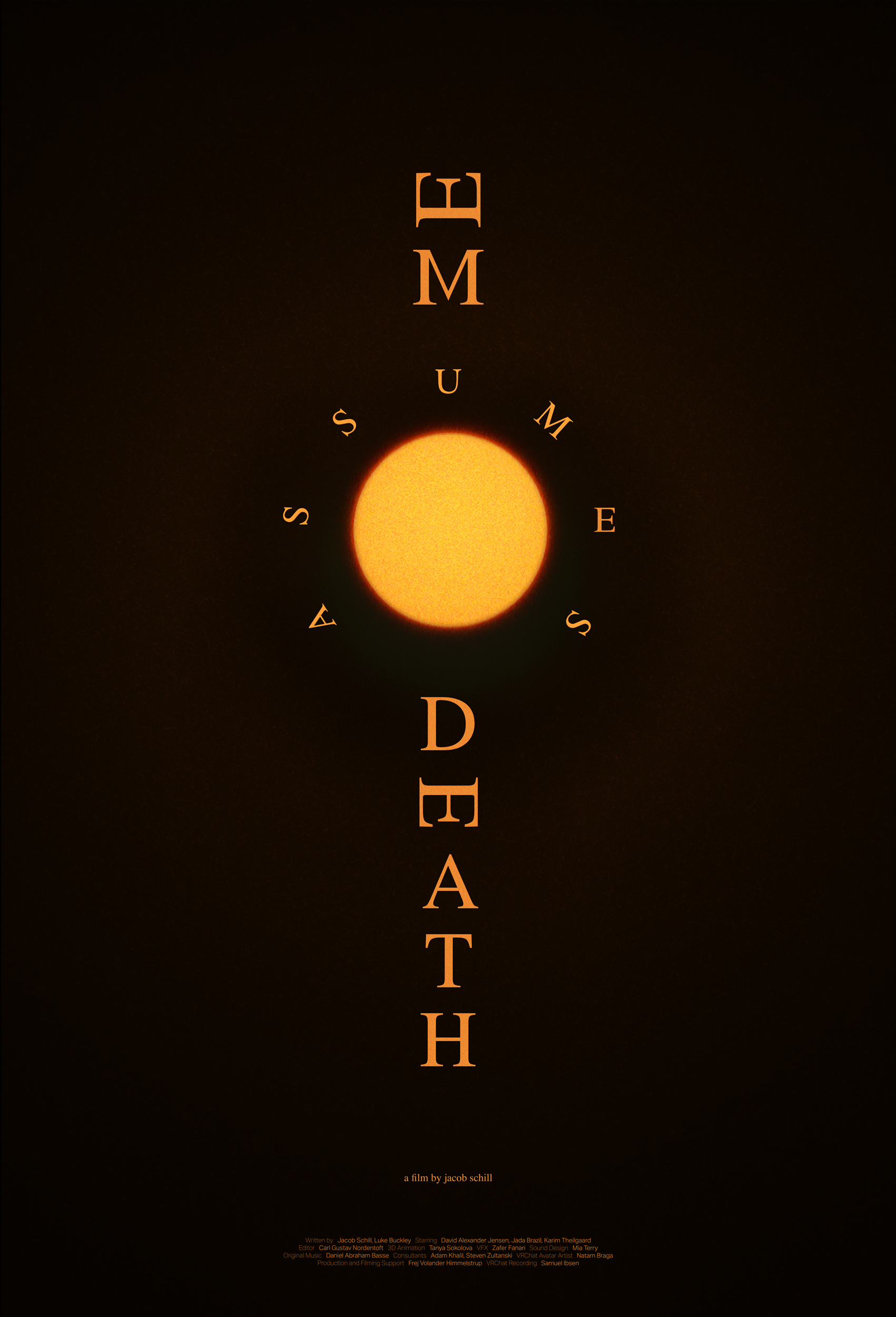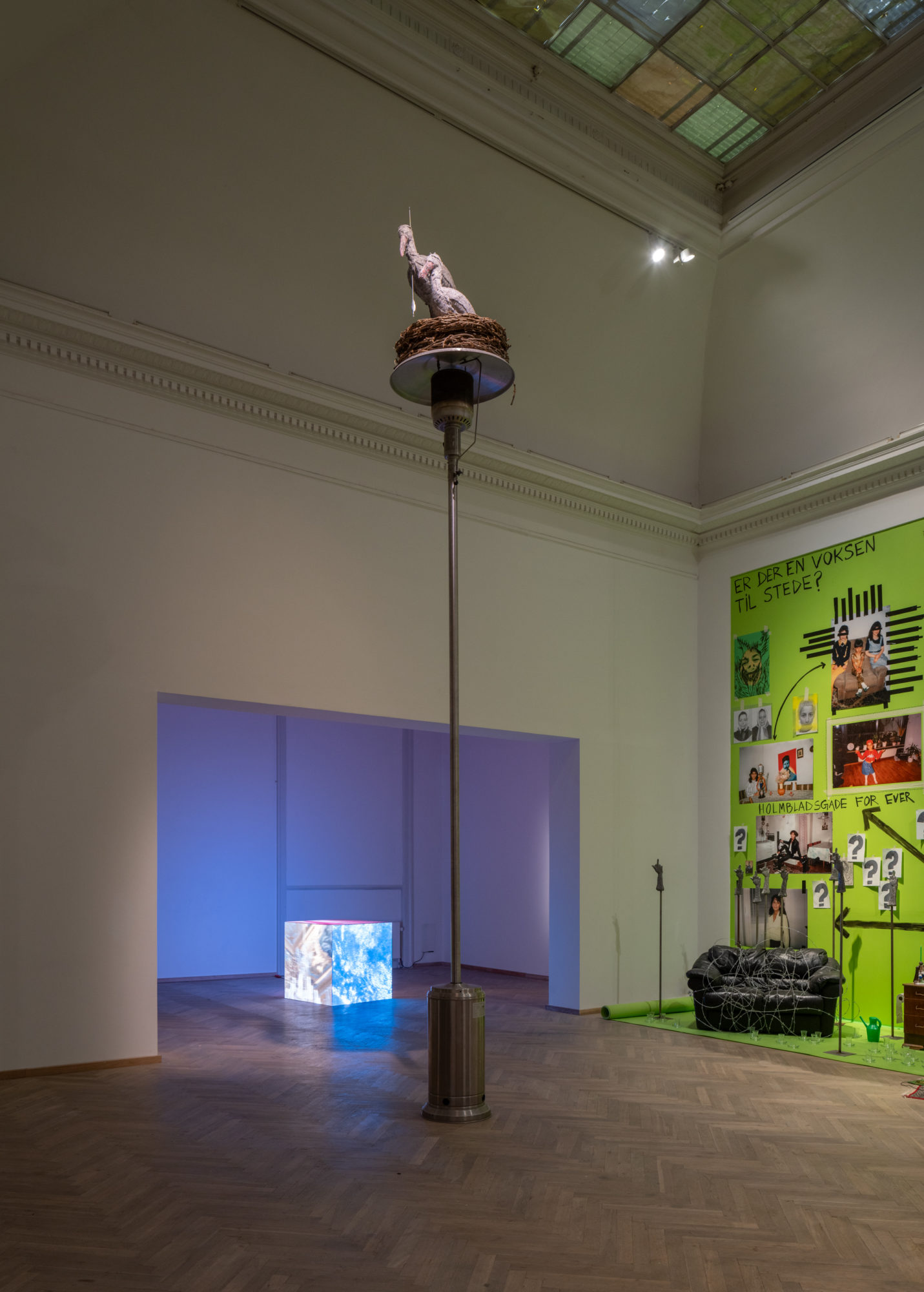
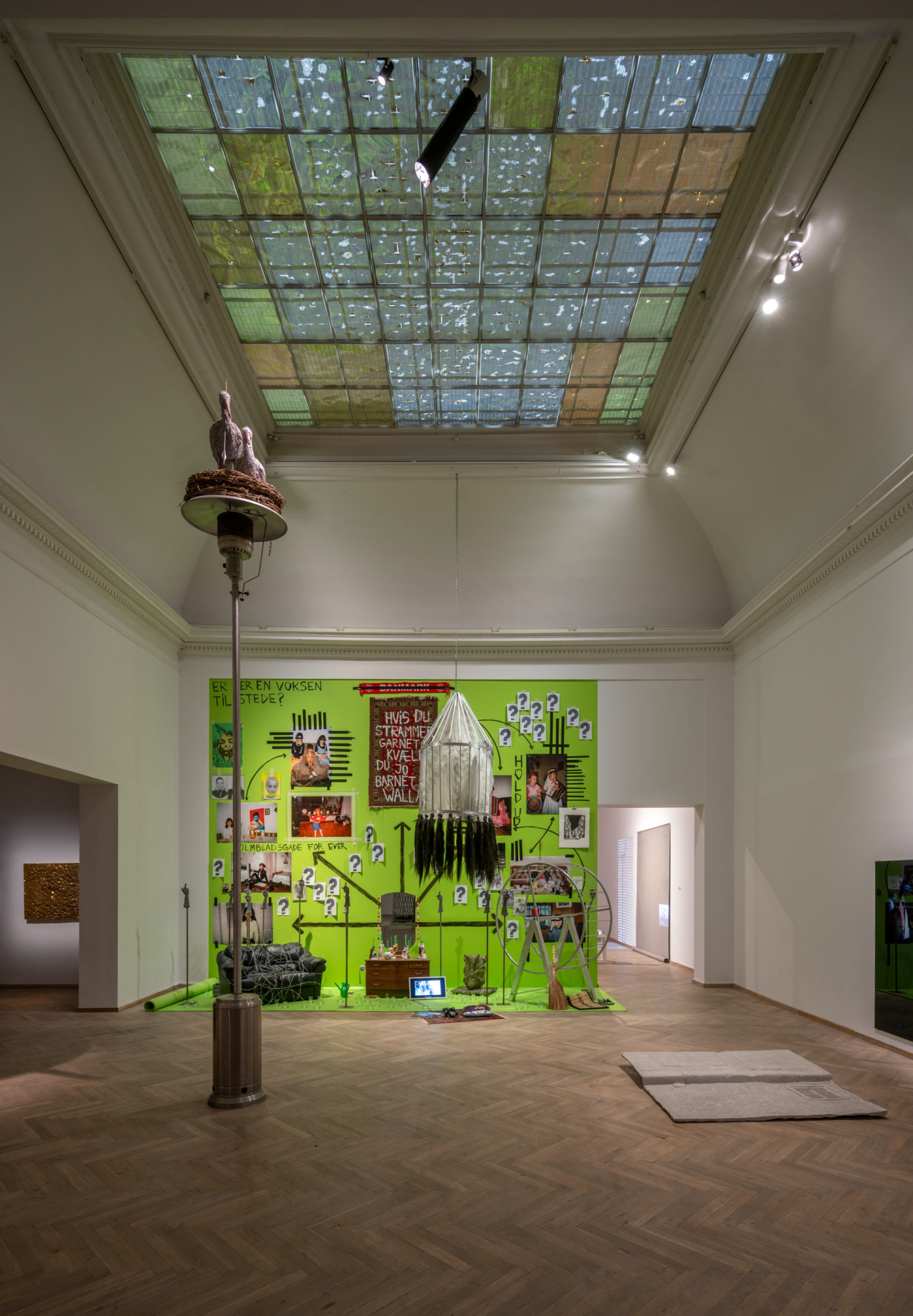
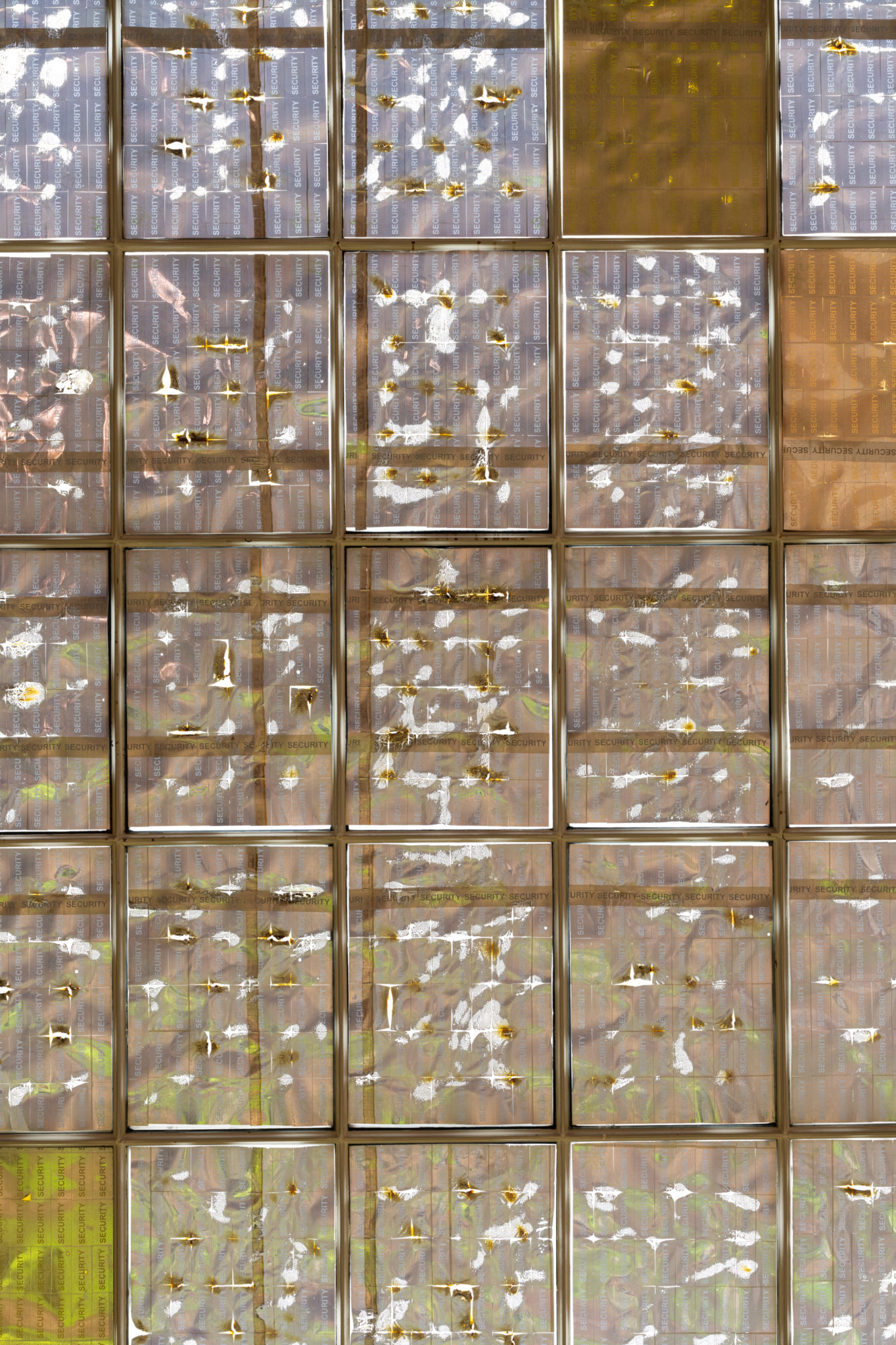
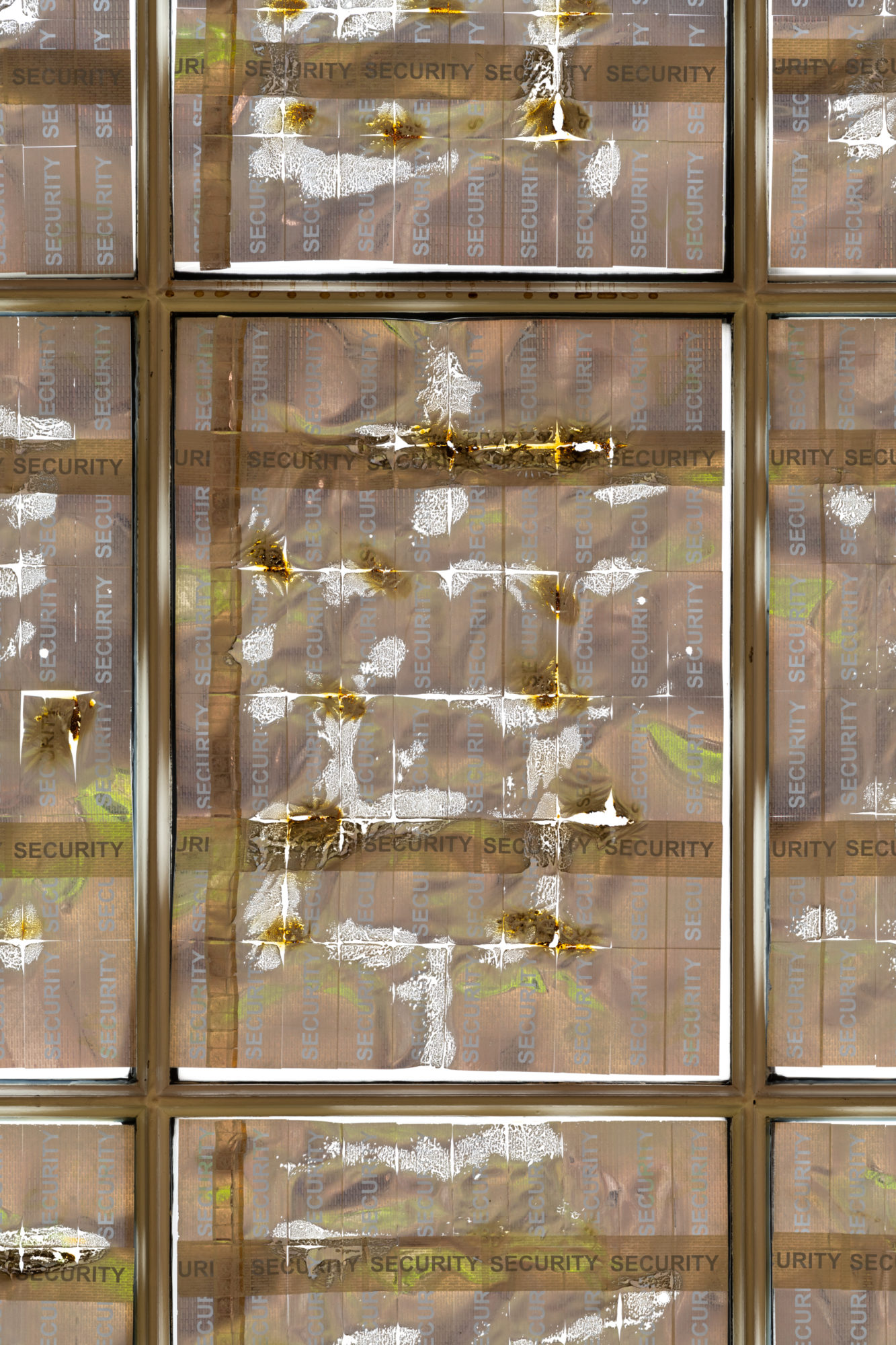
A Nest for Pfeilstorch (Threshold) (2024), outdoor heater, aliuminium pole, wood, plastic, metal and other diverse materials.
Eternal Security (2024), plastic sheets, different holographic security stickers.
Lukas Danys’ mixed-media practice considers how technological and symbolic shifts generate changes in perception, understanding, consciousness, and social reality. Active also as an organizer of the hybrid music and art communal initiative Rewild and the In Situ Festival, Danys is interested in the intimacy of space and the ways certain infrastructures stage dynamic interchanges between inner and outer worlds. Danys’ Eternal Security navigates the intersection of authenticity, identification and surveillance by covering a skylight of the Charlottenberg with a wide variety of security holographic stickers, those layered polychromatic images found on passports, credit cards, documents, expensive goods, software and hardware packaging and, funnily enough, on university degree certificates. Alternately visible depending upon the angle of perspective of the viewer, the stickers are authentication devices, a technology that ‘proves’ legitimate identity, originality, veracity, and value, a materialization of trust and authority. Indeed, the complexity of the designs is meant to be readable as legitimate by a trained eye, yet unreproducible, and thus secure from unauthorized hacks, illicit reproductions, counterfeits, forgeries, and fakes.The artist notes that holographic technologies also regularly adorn digital components and are even essential in emerging nanotechnologies, but one must not neglect the power that such stickers have in our economic and biopolitical systems. They are supplementary abstractions added to objects that have profound material impacts on our actions, exchanges, and our bodies. Covering up the sky at the threshold of the inside and outside, Danys multiplies these authoritative holographic stickers to make visible present day authentication processes and their effects on identity, privacy, the movement of humans through borders, and the circulation of goods. The holographs play visual tricks at the surface, their “variability” denoting a shifting, iridescent, and even psychedelic quality, yet they are largely operational images whose primary viewer is a machine.
Danys calls attention to how technological change is making it increasingly difficult to detect what is ‘real’ and ‘authentic’ in our world, and how practices of legitimacy and trust are evolving. Charting a space where physical, metaphysical, and digital realms continuously converge, the work poses questions on the implications that increased computation, digital security, and cryptography will have on our concepts of security, privacy, ownership, identity, and, fundamentally, our movements and perceptions.
Drawing our attention up to the holographic canopy, Lukas’ A Nest for Pfeilstorch (Threshold) is a common outdoor heater that extends up far beyond normal, serving as a nesting platform for storks. The storks, abstracted yet recognizable, are punctured by arrows, referring to the Pfeilstorch, a term derived from 19th-century Germans discovering storks returning to Europe with arrows from Central Africa embedded in their bodies. This was the first ‘proof’ of trans-continental bird migration for Europeans, who had long struggled to explain the disappearance of local flocks over winter. The sculpture points to such pivotal moments that redefine our understanding of ourselves and the environments that surround us, as well as our place in them. As an icon for a connected world, as well as the violence of migration and surveillance, the storks, like the holographic stickers, are evidence of mobility and the crossing of boundaries, but also signal a shift in perspective, a different point of view.
